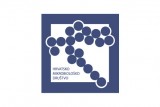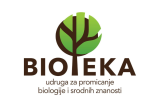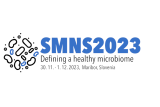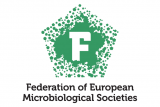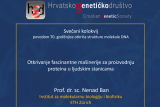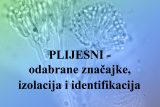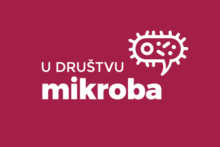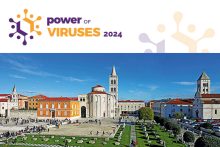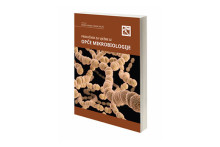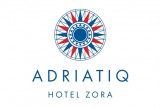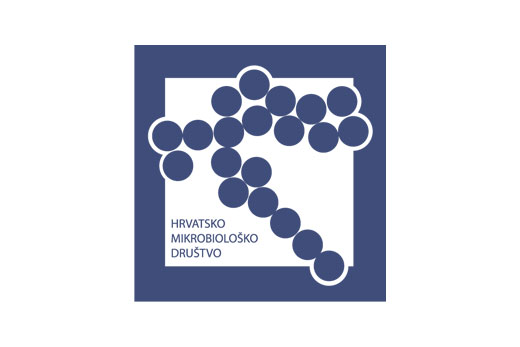
Podmirenje članarine za 2024. i važna odluka o članstvu
Novosti
Sretan Uskrs
Svim posjetiteljima stranice Hrvatskog mikrobiološkog društva želimo sretan Uskrs!
Izvješće s Godišnje skupštine HMD-a
Sastanak članova Sekcije za mikrobiologiju hrane
Poziv na Godišnju skupštinu Hrvatskog mikrobiološkog društva
Sastanak Bakteriološke sekcije
Sretan Božić i Nova godina!
PANDA 7 – projektna nastava za darovitu djecu: poziv članovima HMD-a za sudjelovanje u izvedbi projekta
Sastanak Sekcije za primijenjenu mikrobiologiju
Izvještaj: Slovenian microbiome network simposium 2023 (SMNS2023) – Defining a Healthy Microbiome
FEMS – November 2023
Read the newsletters: FEMS Affiliates Letter, FEMS NewsPoziv na Svečani kolokvij Hrvatskog genetičkog društva
Plijesni – odabrane značajke, izolacija i identifikacija
Objavljen je sveučilišni udžbenik „Plijesni – odabrane značajke, izolacija i identifikacija“ koji je proizašao kao rezultat višegodišnje znanstveno-nastavne suradnje između Prehrambeno-biotehnološkog fakulteta Sveučilišta u Zagrebu i Hrvatskog veterinarskog instituta, Zagreb. Autori ovog djela su prof. dr. sc. Ksenija Markov, prof. dr. sc. Jelka Pleadin, dr. sc. Željko Jakopović, dr. sc. Manuela Zadravec i prof. dr. sc. Jadranka Frece.Projekt "U Društvu mikroba"
Osnovna svrha projekta je doprinijeti uvođenju, razvoju i održivosti programa društveno korisnog učenja na fakultetima. Više o projektu
Zanimljivosti
Projekt Virtulab
VIRTULAB je virtualno umrežen znanstveno-istraživački laboratorij za primarne i sekundarne sirovine.Naša članica, prof. dr. sc. Dijana Škorić u podkistu o koronavirusu i cjepivu
Podkist je podcast Zavoda za komunikacijske i svemirske tehnologije (ZKIST) u kojem se razgovara o znanstvenim i tehnološkim temama te temama povezanim sa studiranjem i učenjem. Cilj je u opuštenoj atmosferi približiti najnovija znanstvena istraživanja široj publici, dati studentima širi pogled na to što uče te poslušati savjete starijih kolega o studiranju, radu i napredovanju u profesionalnoj karijeri.Postani član HMD-a
Cilj Društva je okupljanje mikrobiologa i stručnjaka srodnih struka s ciljem unapređenja svih grana mikrobiologije.
Skupovi HMD-a
Power of Viruses 2024
Date: 25-28 September 2024
Venue: Zadar, Croatia
We are honoured and pleased to invite you to the second international symposium “Power of Viruses 2024” to be held at the Hotel Kolovare, Zadar, Croatia, 25-28 September 2024.Ostali skupovi
Date: 23rd - 27th September 2024
Venue: Rovinj, Croatia
PCR i qPCR u mikrobiologiji i molekularnoi biologiji
Date: 7. i 8. svibnja 2024.
Venue: BICRO BIOCentar, Zagreb
Balkan Fungus 2024: The 3rd Balkan Conference on Medical Mycology and Mycotoxicology
Date: 10 - 12 October 2024
Venue: Belgrade, Serbia
FEMS Summer School for Postdocs 2024
Date: 2 - 10 September 2024
Venue: Mediterranean Institute for Life Sciences (MedILS) in Split, Croatia
Izdavaštvo
Priručnik za vježbe iz opće mikrobiologije
Ovaj sveučilišni priručnik napisalo je petnaestak autora iz desetak visokoškolskih ustanova iz Zagreba i Rijeke, a sadržaj je podijeljen u petnaest, slikama bogato ilustriranih poglavlja u kojima su opisane i obrađene različite bakteriološke, virološke, mikološke, imunološke i molekularno-biološke metode koje se upotrebljavaju u općoj mikrobiologiji koja se studira na nizu različitih fakulteta i visokih škola.
Veterinarska imunologija
Radi se o vrhunskoj literaturi za potrebe visokoškolske nastave iz veterinarske imunologije. Knjiga je svojim sadržajem namijenjena prvenstveno studentima, ali i veterinarima u praksi i nastavnicima.
(Iz recenzije)


